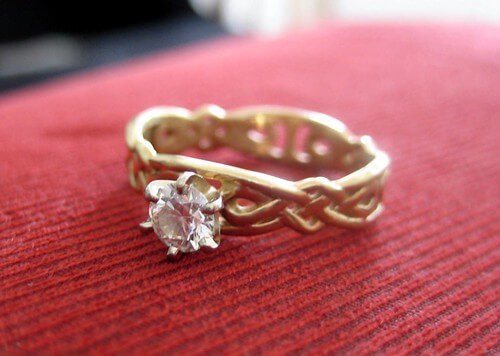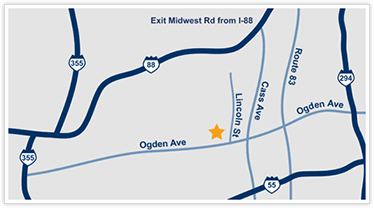Karat vs. Carat: What’s the Difference?
Whether you’re shopping for jewelry or looking to sell jewelry, you’ll likely hear the terms karat and carat. But what do they mean? And what’s the difference? Is there one, really?
They sure do sound the same, but they’re spelled differently and they mean something different. Learn more about the difference between karat vs. carat so that you can become a more informed trader.
What is a Karat?

When you’re describing gold jewelry or coins, you typically focus on three specifications: dimensions, weight in troy ounces, and purity. Gold purity is the ratio of gold to any other base metals in the gold. This ratio is expressed in parts per 1,000 in the form of a percentage or decimal. For example, you might see gold described as 0.999 or 99.90% pure gold. Karat is another term used to express gold purity.
Different Karat Levels
Since pure gold is soft, it’s usually mixed with other metals to form an alloy and make it harder. While these metals increase the strength of gold and make it more practical for the jewelry you might wear every day, they will change the color of the gold. The purest form of gold is 24 karats, which is sometimes also written as 24K. This gold has a bright yellow color. However, the more metals you mix with gold, the lower the karat becomes and the more the color varies from 24-karat gold.
The difference in karats can substantially change the look of jewelry. For example, 18-karat gold contains 75% gold and 25% other metals. If you compare it to 14-karat gold, which contains 58.5% gold and 41.5% other metals, you’ll notice the 18-karat gold looks more yellow in tone than the 14-karat gold.
In other words, a diamond with a lower color grade set in a higher karat gold could conceal the slightly yellow tone of the diamond.
Karat and Durability
Not only do different karat levels change the color of gold, but they can also impact the durability of gold. As previously mentioned, pure gold is soft. As a result, lower karats are more common. Nonetheless, a piece of jewelry that’s 14-karat gold will be stronger than one that’s 18-karat gold.
What is a Carat?
Contrary to popular belief, carat doesn’t measure the size of a diamond or other gemstone. You measure a gemstone’s size in millimeters according to its diameter. Instead, carat measures the weight of the gemstone. One carat equals 200 milligrams. The higher the carat size you choose, the higher price you’ll pay. This price can rise significantly as the carat size increases, and the increase isn’t on a linear scale.
Carats and Standardization
For years, different countries around the world had their own measurements for what one carat would equal. For example, in Cyprus, a carat was 187 milligrams. On the other hand, in Livorno, Italy, a carat was 216 milligrams. It wasn’t until the Fourth General Conference on Weights and Measures in 1907 that everyone agreed to adopt the carat as the standardized weight measurement for gemstones.
Carats in Diamonds
If you’re shopping or selling your ring, you’ve likely heard about the four Cs: clarity, cut, color, and carat. While each factor is important, carat will influence the other ones. If your jewelry has a larger carat size, your diamond should have a higher color grade since the color will be more noticeable. Your diamond should also have a higher clarity grade so that your stone is clear and bright.
The most popular diamond size in an engagement ring, just as an example, is one carat, which is 6.4 millimeters in size. However, it’s hard to visually tell the difference between diamonds that have a 5 to 10% difference in carat weight. As an example, a 0.95-carat diamond and a one-carat diamond will look nearly identical in size.
History of the Terms
Before the 16th century, gem traders didn’t have an established unit system to weigh their products. As you can imagine, this situation created difficulties and confusion. At that time, the only way to measure something was to link it to another physical object that was readily available.
Traders who worked in the African marketplace eventually discovered carob seeds, which come from fruit pods on carob trees that grow in the Mediterranean region. Since all carob seeds look equal in size, they assumed the seeds were also equal in weight. This uniformity gave the traders the idea to use the seeds as counterweights for small items, such as gemstones. For some time, gem traders would use carob seeds on a balance scale to weigh their gemstones.
When sensitive weighing machines were invented, people discovered that a single carob seed weighed approximately 200 milligrams. However, the pronunciation of carob had become distorted over time, and people had started saying carat. When 200 milligrams became a formally reorganized weight unit, it was given the name carat, which had become more popular than the original carob. However, today, carob seeds would never work as a standardized counterweight because scientists have since discovered that carob seeds are no more consistent in weight than many other seeds.
Karat is a variation of the term carat. While there’s no record of people using carob seeds to measure gold, historians traced the first use of the word karat to the 15th century. They believe that while karat had a different spelling, the term had the same meaning. However, at some point, the two terms split. Karat became the term for gold purity, and carat became the term for gemstone mass.
Now that you know the difference between karat and carat, you’ll have an easier time selling your ring, diamonds, or gold. Questions or comments? Give us a dial.
Tags: Gold Jewelry, Gold Karats, Karat vs Carat, Percentage of Gold



